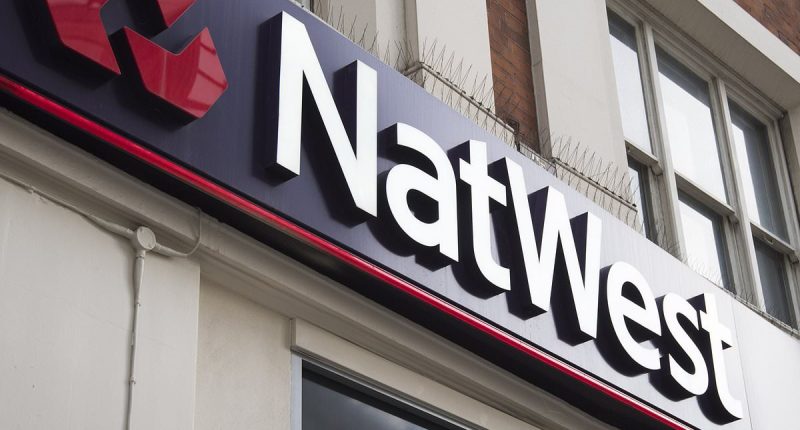Share this @internewscast.com
Drama of every kind has featured at NatWest bank since its beginnings in 1727 – and now another plot twist looms.
The Government is poised to sell off its 0.9pc remaining stake in the bank, marking a major milestone since it was bailed out by the taxpayer in the 2008 crisis. But does the fact the bank is now totally out of government hands mean it is a good investment – or should small savers steer clear?
The disposal of the government shareholding in NatWest is largely symbolic. Since 2015, the Treasury has been gradually reducing its stake. Nevertheless, the imminent disposal of the few shares that are left will be a significant moment.
Taxpayers have incurred significant losses from past sales -which have been at values below the 502p price at which the bank, then called Royal Bank of Scotland, was rescued at the height of the global financial crisis.
For a sum of around £46bn, the UK state became the owner of 84pc of the catastrophically ill-managed institution.
Recently, NatWest’s chairman Rick Haythornthwaite has said that the bank is indebted to taxpayers for the bail out which ensured the bank’s survival, although resentment may linger.
But whatever the public reaction to the news, anyone buying or holding NatWest shares today is participating at a key moment in its history – and also taking a bet on the reshaping and revival of the UK economy.

Drama of every kind has featured at NatWest since its beginnings in 1727
As Alex Potter, an investment director at asset management firm Aberdeen, comments: ‘The Government’s growth agenda cannot be delivered without the banks.’
The circumstances leading up to the rescue in 2008, led by the late Alistair Darling, the chancellor of the exchequer at the time, will be the basis of a new play – Make It Happen, by the award-winning James Graham. It will open this summer in Dundee, moving on to the Edinburgh Festival.
Justifying the bailout, Darling memorably said: ‘We only had one shot here. If it didn’t work, there was nothing else we could have done. The country was on the brink of Armageddon.’

Anne Ashworth is a property and finance writer, commentator and consultant
Make It Happen will doubtless allude to this situation, mentioning that before the bank’s fall, the shares were trading at almost 6,400p.
By early 2009, the price had slumped to 71p. This reflects the devastation wrecked by Fred ‘the Shred’ Goodwin, the bank’s domineering and foolhardy former boss. In 2009 a loss of £24bn was reported, the largest in UK corporate history.
Today, the slimmed-down NatWest is in a very different state, under chief executive Paul Thwaite who took over from Dame Alison Rose in 2023, following the Nigel Farage ‘debanking’ scandal (there’s never a dull moment at NatWest).
The shares currently stand at 513p, which is 62pc higher than a year ago, and 348pc above the level in the pandemic panic of 2020.
But could they have further to rise, suggesting that this £41.61bn FTSE 100 company should be part of your portfolio? Here’s what you need to know.
A BANK THAT LIKES TO SAY YES TO CHANGE
As NatWest nears private ownership, the scrutiny on its performance and prospects will be heightened.
There is talk in the City that HSBC may be retreating from the UK, which if true, could open up opportunities for NatWest.
Like the other banks it is lobbying chancellor Rachel Reeves to end ‘ring-fencing’, under which banks’ consumer lending is separated from more volatile investing banking.
Thwaite and other bank chiefs say this arrangement ‘is not only a drag on banks’ ability to support business and the economy, but is now redundant’. Geopolitical tensions will increase the focus on NatWest and the other members of the Big Four – Barclays, HSBC and Lloyds. The Bank of England is monitoring these and other smaller banks extra carefully in case President Trump’s tariffs begin to inflict damage on the global and UK banking systems.
Thwaite says that he is ‘very vigilant and alert’ for signs of trouble that could slow the process of transformation of the bank, which has been underway since 2010.
There have been sell-offs of holdings in such businesses as Direct Line and Citizens, a US bank, and purchases such as the loans book of Metro bank and the banking arm of Sainsbury which has brought one million new customers. Operations have been streamlined and costs cut.
To underline this new look, NatWest decided to change its name from Royal Bank of Scotland (RBS) in 2020. Richard Hunter of Interactive Investor says: ‘NatWest is an entirely different beast now.’ The institution’s makeover has been based on three pillars: disciplined growth, bank-wide simplification, and active balance sheet and risk management.
The success of this drive to leave the past behind can be seen in the 83pc share price rise in 2024, but also in the profits for the first quarter of 2025 announced earlier this month which exceeded City’s estimates.

Paul Thwaite took over from Dame Alison Rose in 2023 as chief executive of NatWest
The bank’s total income was 14.5pc higher at £3.98bn than in the same period of 2024. There was also a 36pc increase in pre-tax profits to £1.81bn. Total income for the year is now projected to be £15.2-£15.7bn.
Potter highlights the first quarter ROTE of 18.5pc – which is the highest in the sector. This ratio – it stands for return on tangible equity – is a closely watched one among banks. It is a measure of bank’s efficiency in the use of its capital.
At a time when interest rates are heading downwards, NatWest’s ‘structural hedge’ also draws admiration. It’s nothing to do with gardening: banks make most of their money from the difference between borrowing and savings rates.
When interest rates fall, this ‘net interest margin’ begins to be eroded, but the adverse effect can be lessened if the bank builds up a structural hedge of bonds to provide a buffer.
When the Treasury reveals that the last of its NatWest shares have found buyers, attention will turn to deal-making.
Earlier this month it emerged that bank’s £11bn offer for the UK arm of Santander had been rebuffed.
This news came as something of a surprise to some observers who did not think that NatWest was planning an acquisition of this scale. Now they are realising that Thwaite’s ambitions may be more extensive than they had imagined. If you are thinking of investing, be prepared for adventure.
THE CHANCE TO BE PART OF HISTORY AND EARN AN INCOME
Among the 17 analysts that follow NatWest, seven rate the shares a ‘buy, another six consider them to be a ‘hold’, while four think that the shares will outperform the sector. The most optimistic analysts have set a target price of 630p; the average target is an undemanding 530p.
Fund managers are more excited about NatWest’s future, believing that the best could be yet to come.
The bank is among the largest holdings at the Edinburgh investment trust and its manager Imran Sattar sees potential for growth in commercial and retail banking and in the wealth management arm whose brands include Coutts, a bank set up in 1692.
But NatWest could be an interesting proposition for those who not only want to take a bet on UK economic recovery but would like to receive an income along the way.
Sattar comments: ‘NatWest’s capital generation is very strong, with the vast majority of cash flows being returned to shareholders through dividends and share buybacks.’
The current dividend yield is 5.6pc, a return that could compensate for the shocks that could lie ahead at this next stage in the next episode in the history of this bank which has been about for three centuries.











